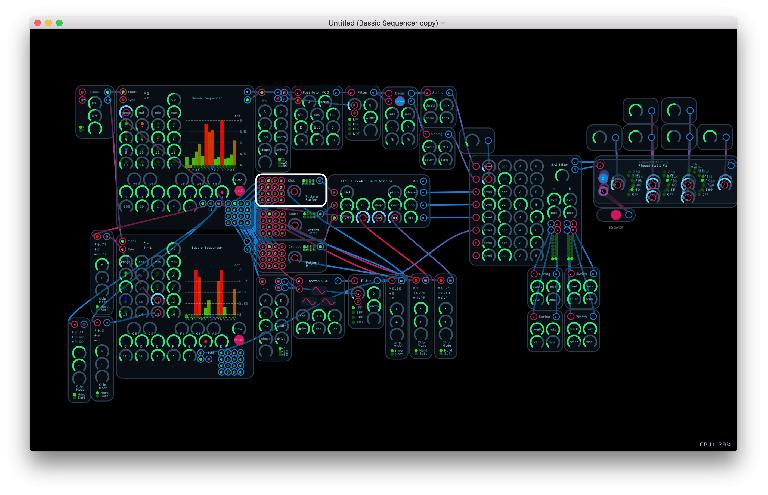

- Audulus 3 tutorial ipad how to#
- Audulus 3 tutorial ipad update#
- Audulus 3 tutorial ipad Patch#
- Audulus 3 tutorial ipad trial#
- Audulus 3 tutorial ipad series#
No more complicated math, or guessing what each knob’s range is. Now, you can plug the LFO directly onto the knob, or to get it to swing in a small range, you just tie it through another module that shrinks the range of the LFO and then translates it up or down. This might be hard to visualize, but basically, if you wanted a 0 to 1 LFO to modulate a filter, you used to have to do math to translate it into the range you wanted.
Audulus 3 tutorial ipad update#
This update solves the problem by standardizing all knobs on modules to a 0 to 1 range, and the knobs themselves are translated into whatever range they need to be INSIDE the module. You can edit the knob and change those values to whatever range you want, but then if you want to modulate the knob with a 0 to 1 LFO, you’d have to do math to translate that signal into the range you want to modulate. Basically, when you create a knob, its default range of values is 0 to 1. I think what will help the most is that the inputs and outputs have all been defined into ranges that work well with modulating the knobs. If you’re totally new to modular synthesis as a concept, I would suggest following along with the videos one by one, which will explain creating a synthesizer from scratch. If you just want to use the modules, you’ll be able to watch one short video and that will show you everything you need to know to start connecting them.
Audulus 3 tutorial ipad series#
I’ve developed a tutorial series that will get people going in Audulus in under an hour, but that’s if you really want to know how the nodes work and make your own modules.
Audulus 3 tutorial ipad how to#
Hey Charlie – if you understand how to use modular synths generally, it will be simple to start using Audulus, especially with the new library.
Audulus 3 tutorial ipad trial#
Give Audulus a try when the new update drops and get back to me with your thoughts – you can download the trial on our website. However, what this update does is give people what they’ve wanted for a while – presets and ready-to-go modules and whole synths that you can just plug ‘n’ play. It sounds like your definition of what makes a musician is very narrow, as I know many musicians who not only love Audulus, but love the ability to make large patches and create their own custom effects, oscillators, and filters.Ī part of the compositional process with Audulus can be in making something like the Chladni Sequencer – if you’ve never laid out your own circuit board, or designed a new instrument, it would make sense that you’re not familiar with the joy of discovery and invention that you come across with a program like Audulus. You seem to also be mistaken how the Chladni Sequencer works – it’s not random, but semi-random, and its behavior is predictable to a certain extent. Hey Chris! I’m sorry but I have to disagree – I included several patches in the update that are keyboard input->envelope->oscillator->filter->output, and they sound fat as hell. We’re working on greater ways to share patches with other users – like, say, you can subscribe to a user, and you’ll get a notification when they post a new patch, or just automatically download it for you – in other words, we have very big plans for the future!
Audulus 3 tutorial ipad Patch#
Developing Audulus as a floating tentacled telekinetic brain for your DAW is something we’re very interested in doing.Īs for transferring patches, you can use iCloud and your patches will stay in sync automatically – you can start a patch on the bus ride home and then pull it up on your laptop at home without having to send it or sync it – that all happens in the background. We’re also working on ways to expand the interconnectivity of the app – MIDI out can finally start to be worked on, and I know people have asked for OSC control. The CPU savings from a lower control rate will also be a huge jump, especially in patches like you see in the video above, where that sequencer is has hundreds of expressions to evaluate. We’re looking into letting the user change the sampling rate of particular areas (lower sample rate for control signals, upsampling for filters and distortion), so know that although it’s not in yet, it’s on our radar. The iOS sample rate is 44.1k and the computer version runs at whatever sample rate you have your computer or host set to. Glad you like the interface! That’s largely thanks to Hannes Pasqualini of PaperNoize – he did the Mutable Instruments panels.


 0 kommentar(er)
0 kommentar(er)
